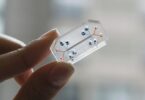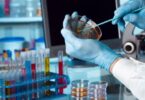Epilepsy is a neurological condition that produces a series of convulsions or repetitive uncontrolled body movements that a person can suffer, being a disorder caused by the increased electrical activity of neurons in some area of the brain. To consider someone epileptic, attacks must be repeated with some continuity.
Epilepsy has its origin in brief and sudden changes in the functioning of the brain; this condition is not contagious or caused by any illness or mental retardation.
Many cases of epilepsy secondary to injuries can be prevented by using seat belts in vehicles and helmets on bicycles and motorcycles; putting children in suitable seats for cars and, in general, taking the necessary precautionary measures to avoid injuries and head injuries.
Epileptic seizures are sometimes classified according to their characteristics.
Simple partial seizures start with electric shocks in a small area of the brain and these shocks remain limited to that area. According to the affected part of the brain, the person experiences abnormal sensations, movements or psychic aberrations. On the other hand, Jacksonian seizures, symptoms begin in an isolated part of the body, such as the hand or foot, and then ascend the limb at the same time that electrical activity is spread through the brain. Complex partial seizures (psychomotor) begin with a period of one or two minutes during which the person loses contact with their environment. The person may wobble, perform involuntary and clumsy movements of arms and legs, emit unintelligible sounds, not understand what others express and can resist to be helped.
Seizures usually start with an abnormal electrical discharge in a small area of the brain. The discharge quickly spreads to adjacent parts of the brain and causes dysfunction of the entire area. During these seizures the person experiences a temporary loss of consciousness, intense muscular spasticity and contractions throughout the body, forced turns of the head to the side, teeth grinding (bruxism) and urinary incontinence. Later, you may have headache, temporary confusion and extreme fatigability. Usually the person does not remember what happened during the crisis.
 The small evil usually begins in childhood before 5 years of age. It does not produce seizures or other dramatic symptoms of seizures. Instead, the person has episodes of lost eyes, small contractions of the eyelids or contractions of the facial muscles that last from 10 to 30 seconds. The person is unconscious, but does not fall to the ground, there is no collapse or spastic movements.
The small evil usually begins in childhood before 5 years of age. It does not produce seizures or other dramatic symptoms of seizures. Instead, the person has episodes of lost eyes, small contractions of the eyelids or contractions of the facial muscles that last from 10 to 30 seconds. The person is unconscious, but does not fall to the ground, there is no collapse or spastic movements.
The myoclonic crisis begins with a sudden jerk that causes an immediate fall of the patient who suffers it. It only lasts a few seconds. It is similar to the atonic crisis, in which the fall is produced by loss of muscle tone and consciousness.
On the other hand, brain tumors are formed when cells, through the acquisition of mutations in the genome, acquire the ability to invade blood capillaries and therefore travel through the bloodstream (or lymphatic) and reach organs at a distance.
Cells that are damaged or no longer needed die to make way for healthy replacement cells. Problems with the body’s immune system can lead to tumors.
The brain may be programmed to develop normally, but it may be injured during pregnancy, birth or later. The lesions may be due to brain tumors, alcoholism or other drugs, Alzheimer’s, meningitis, encephalitis, AIDS, certain allergies, etc., because all this alters the normal functioning of the brain. Heart attacks, heart attacks and cardiovascular diseases also influence the appearance of an epileptic seizure because they deprive the brain of oxygen.
Currently, a new technique to treat this type of diseases has arisen in the Hospital del Mar in Spain, through laser ablation, ie burning of damaged tissue.
With this technique, tumors and epileptic foci can be eliminated in a minimally invasive, safe and fast manner, with a significant reduction in the time of admission of patients after the intervention.
The procedure begins with the selection of patients who meet the requirements to be able to undergo this technique. These are those with very localized lesions, epileptic foci or tumors, malignant or benign. In the case of patients diagnosed with epilepsy, cases of hypothalamic hamartomas, multiple lesions, tuberous sclerosis or deep cerebral dysplasias can be treated. Also cases of cavernous angiomas, meningiomas and other pathologies.
The intervention begins in the operating room, where neurosurgeons practice the necessary incisions to insert a laser probe into the patient’s skull. The insertion is done with the assistance of the ROSA® robotic system. The anesthetized patient is placed in the magnetic resonance tube and it is confirmed with the images that the point to be treated has been reached.
The objective is planned and the energy pulses are started with the VISUALASE® laser system that will burn the tissue (ablation).
The discharges can be repeated as many times as necessary to guarantee the destruction of the damaged tissue. Work within a magnetic environment adds complexity to neurosurgeons and anesthesiologists.
It should be noted that the laser allows to define more precisely the margins of the area to be treated and that, being a high energy emission, burns and cauterizes the tissue, thus avoiding bleeding and possible bleeding.
So far, the team has made three interventions in patients diagnosed with epilepsy (2) and with a hamartoma. In all three cases, the procedure was performed without problems and the patients were discharged only 48 hours after being treated. In contrast, the usual techniques make it necessary for patients to remain hospitalized for at least one week.
Thanks to it, multiple lesions can be treated in different locations, that is, different epileptic foci at the same time in case the patient is detected more than one.
The intention of the Hospital del Mar team in Spain is to perform a dozen interventions each year to patients who meet the requirements to be able to undergo this type of treatment.
These and other innovations are also possible in Pharmamedic.







